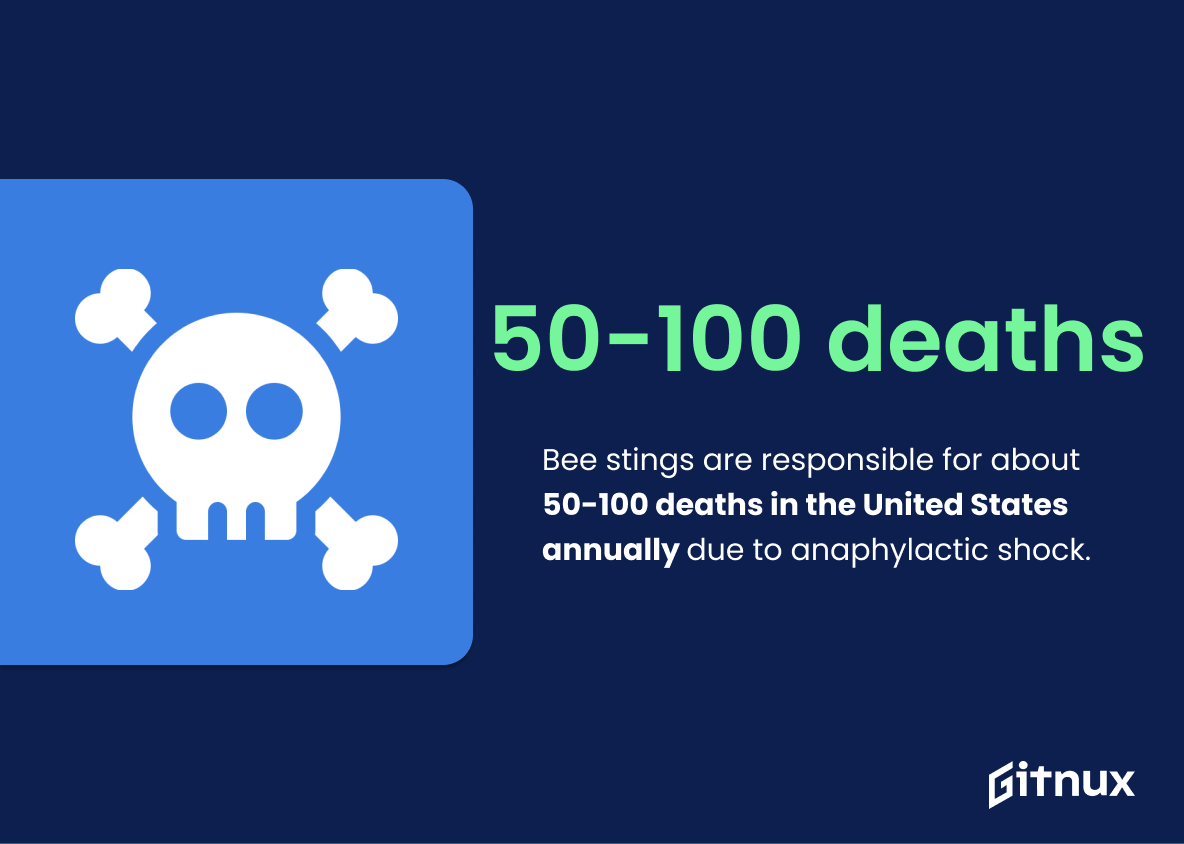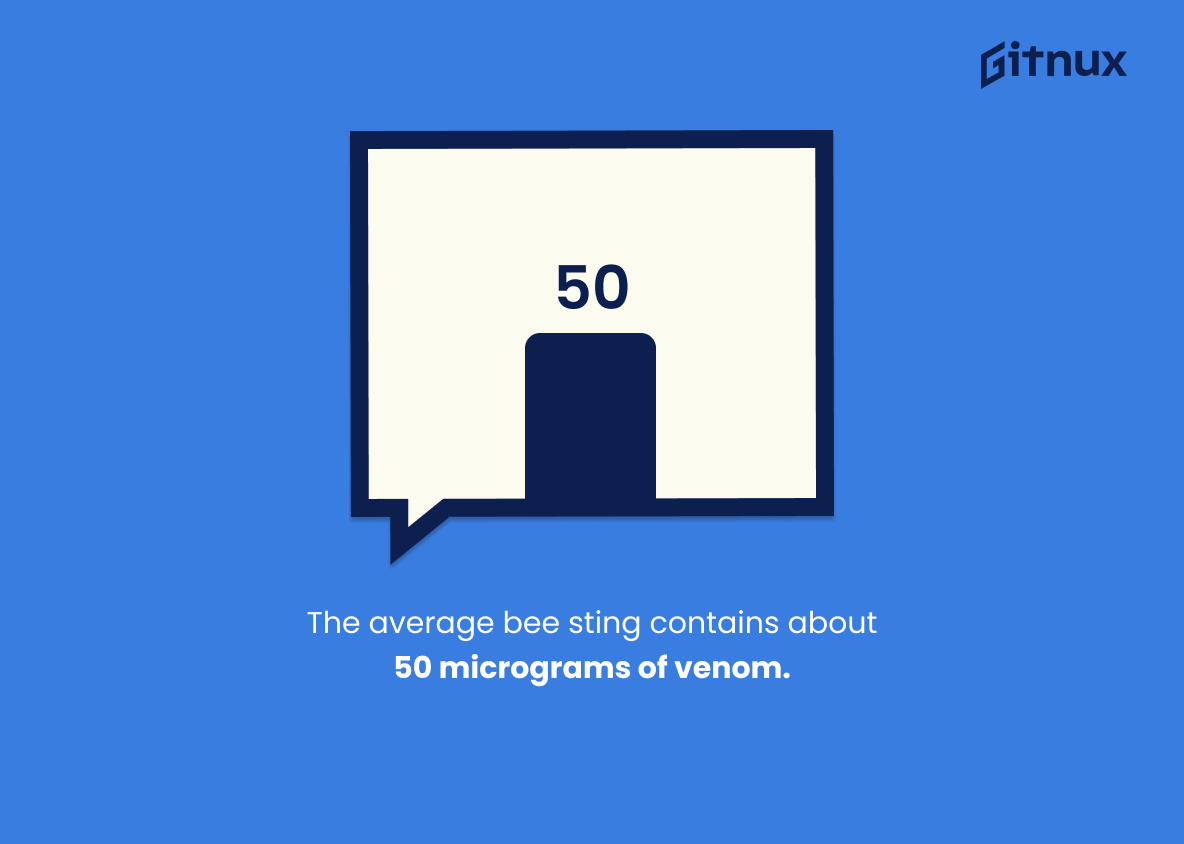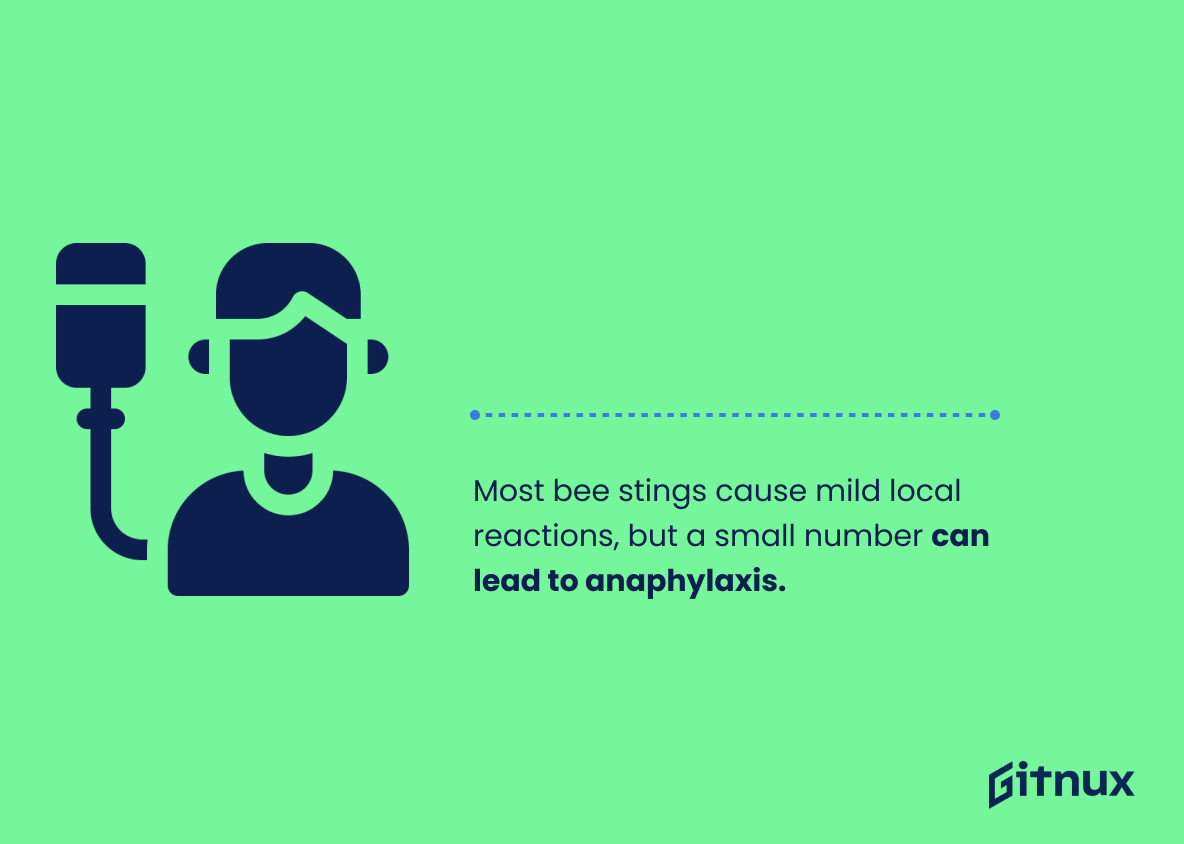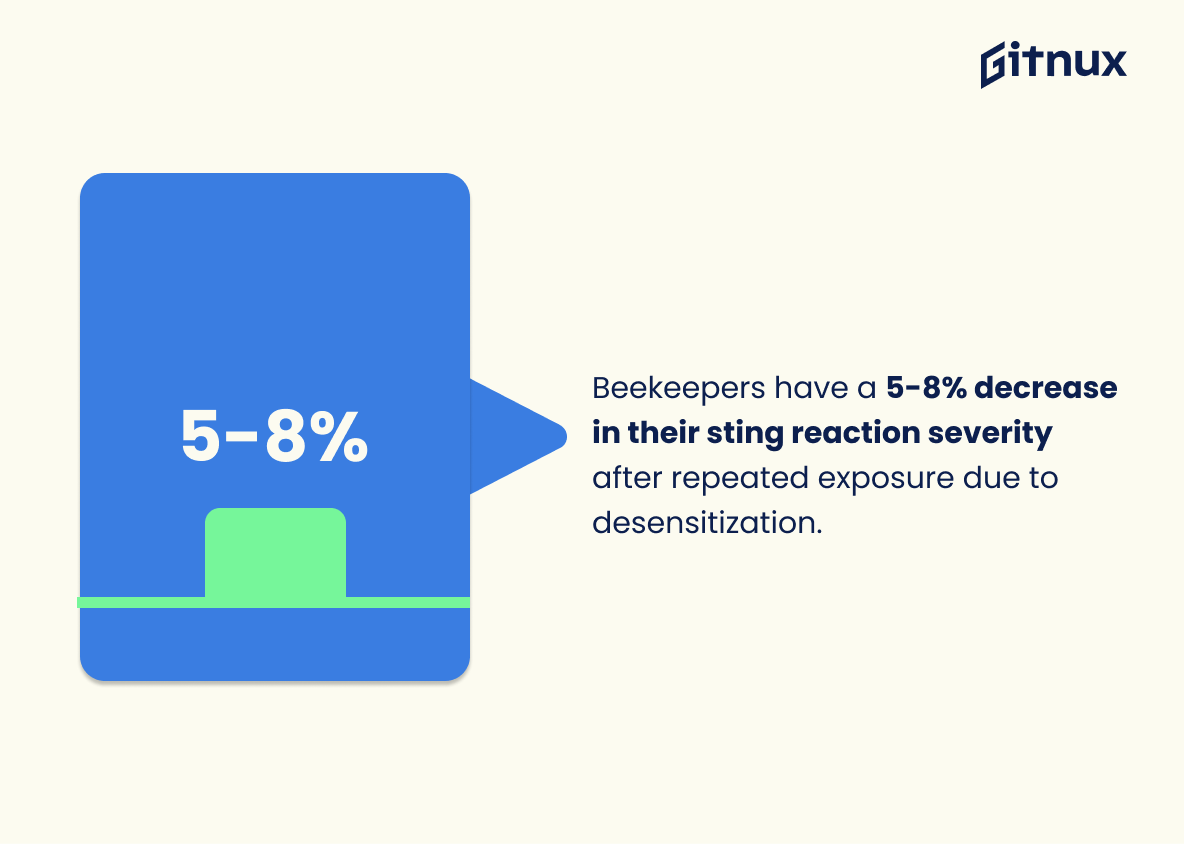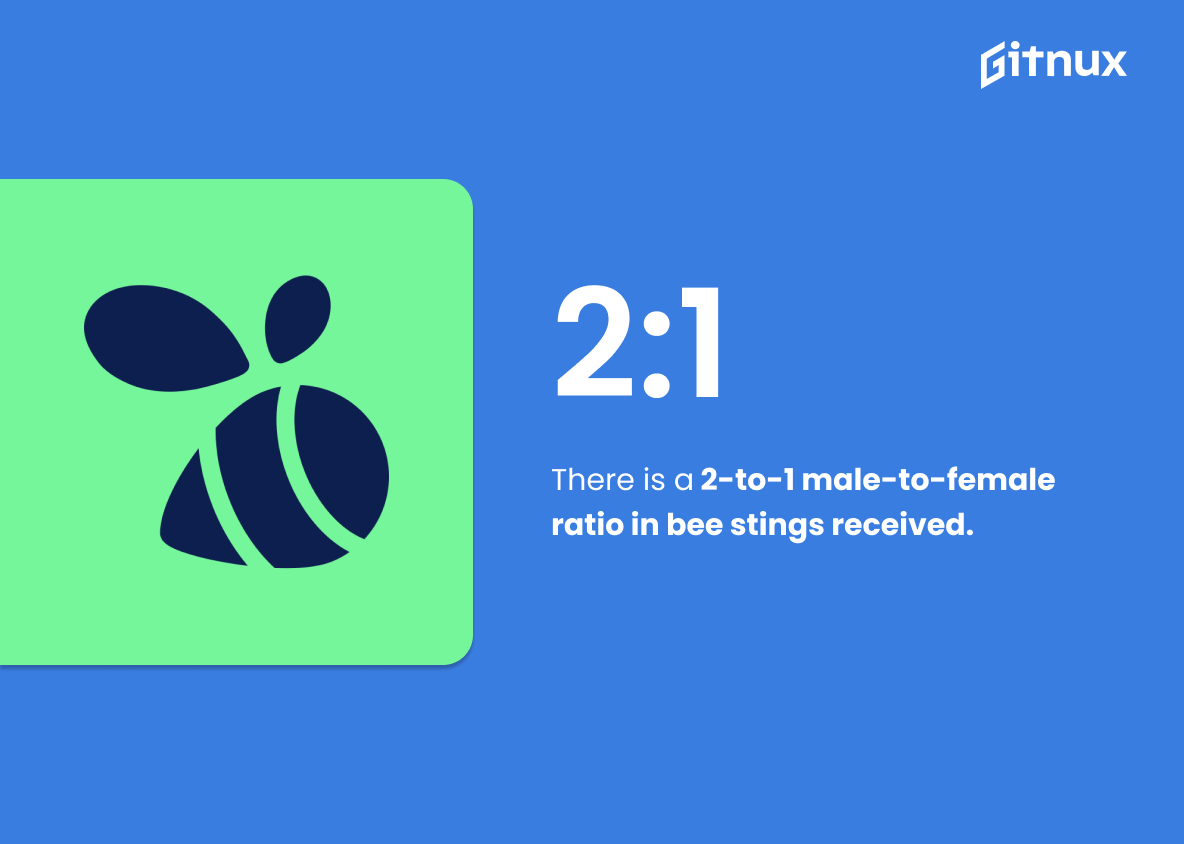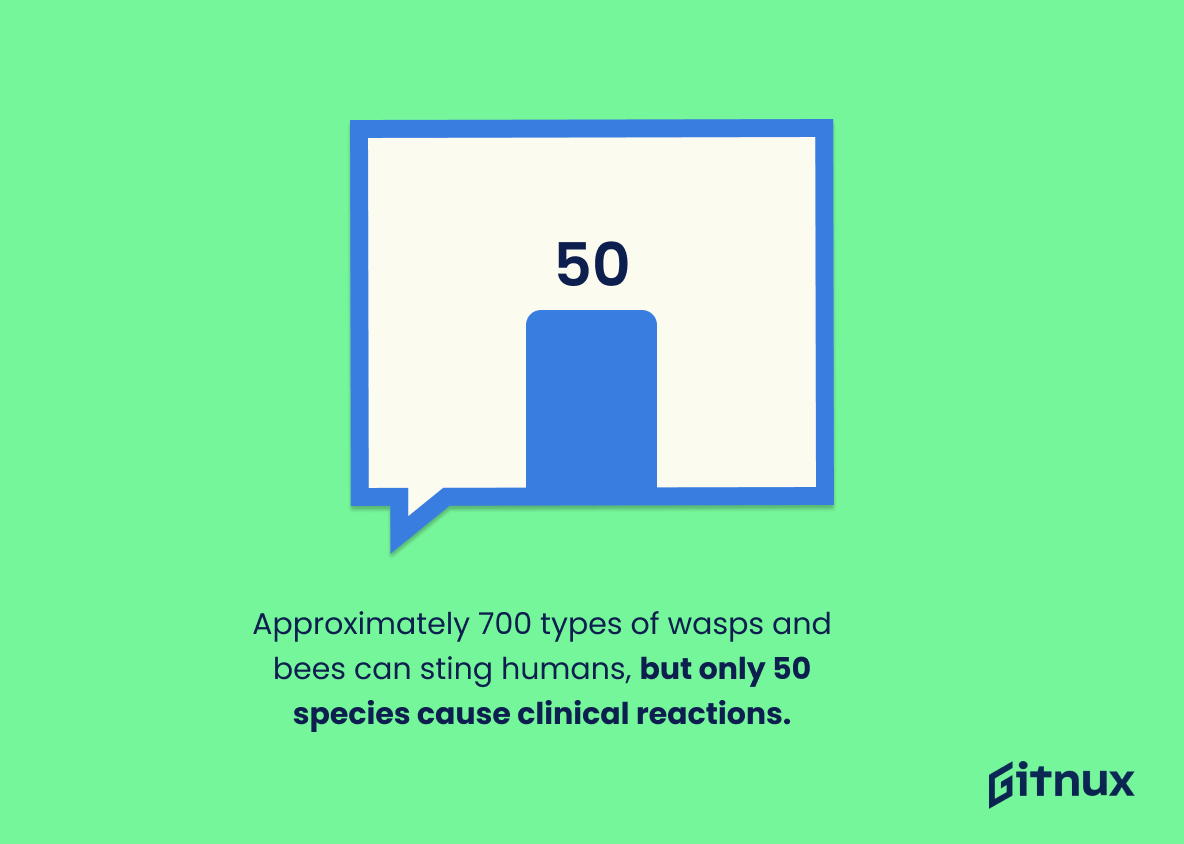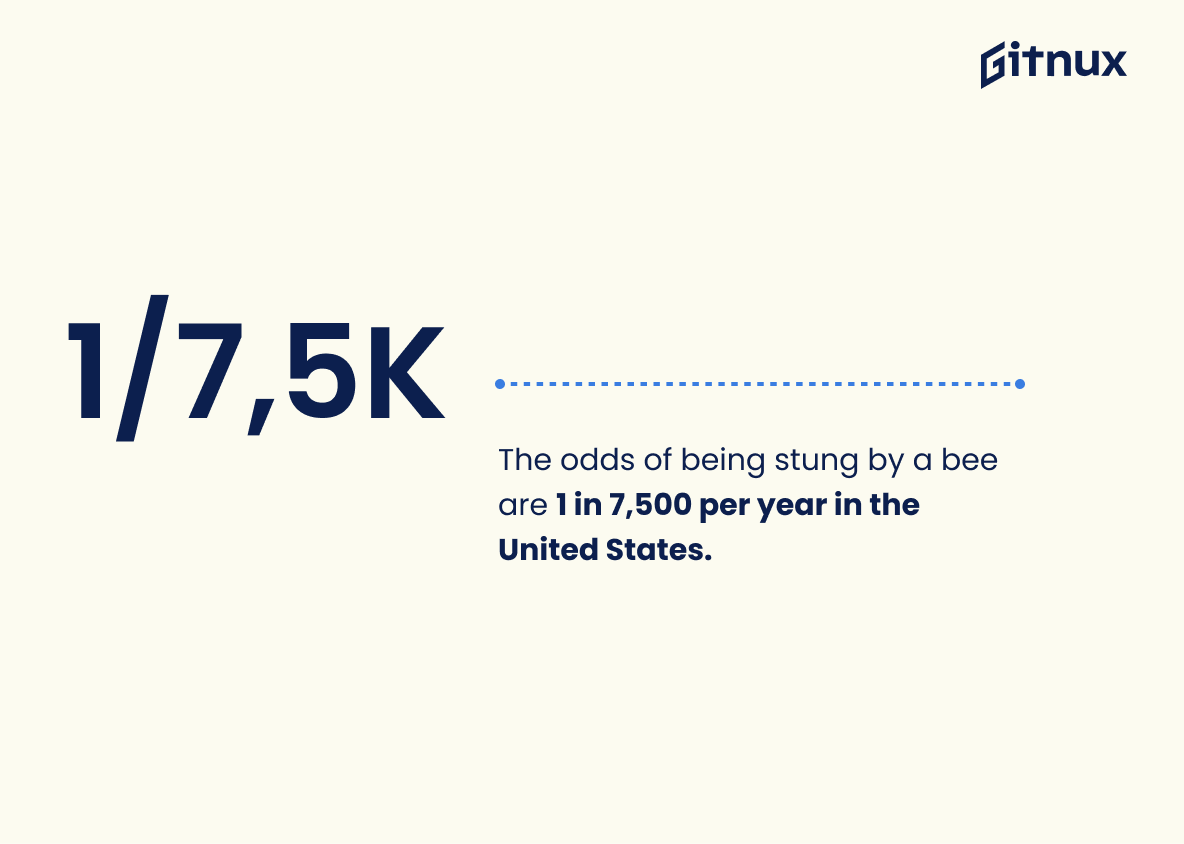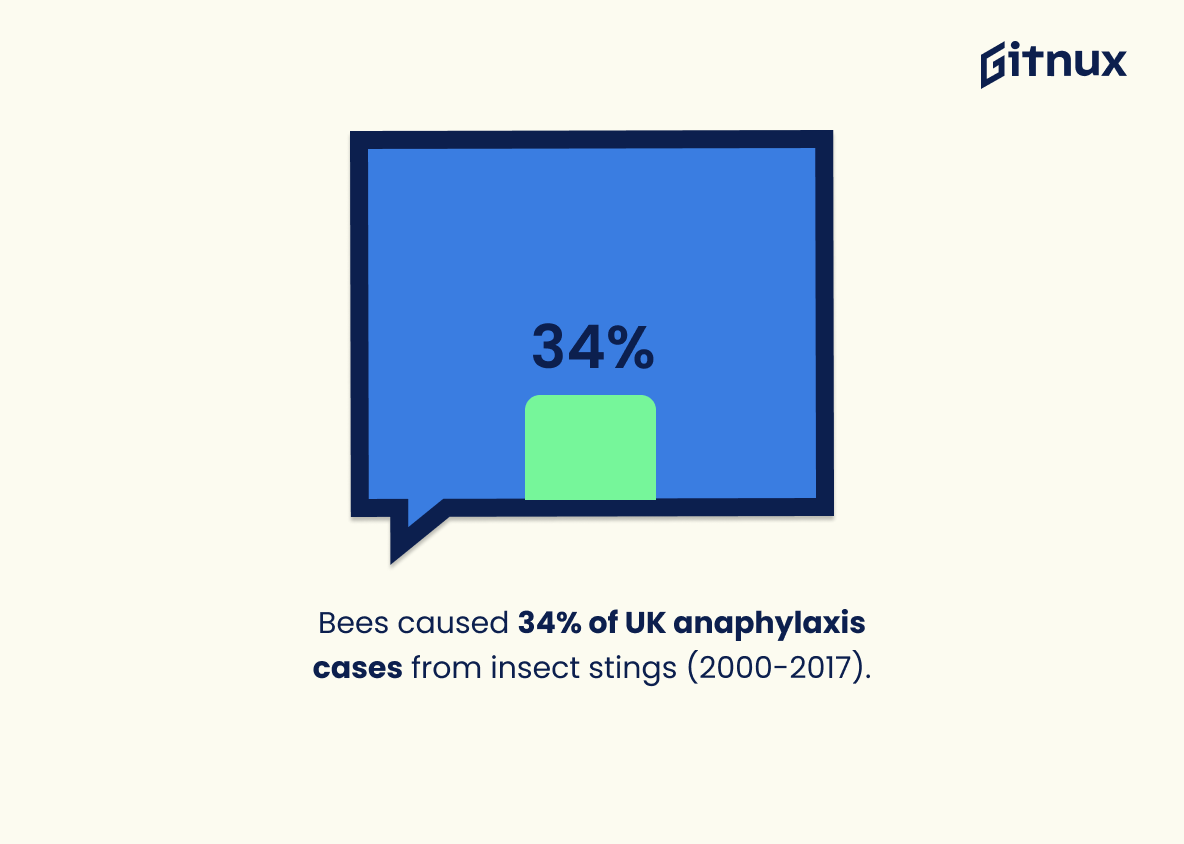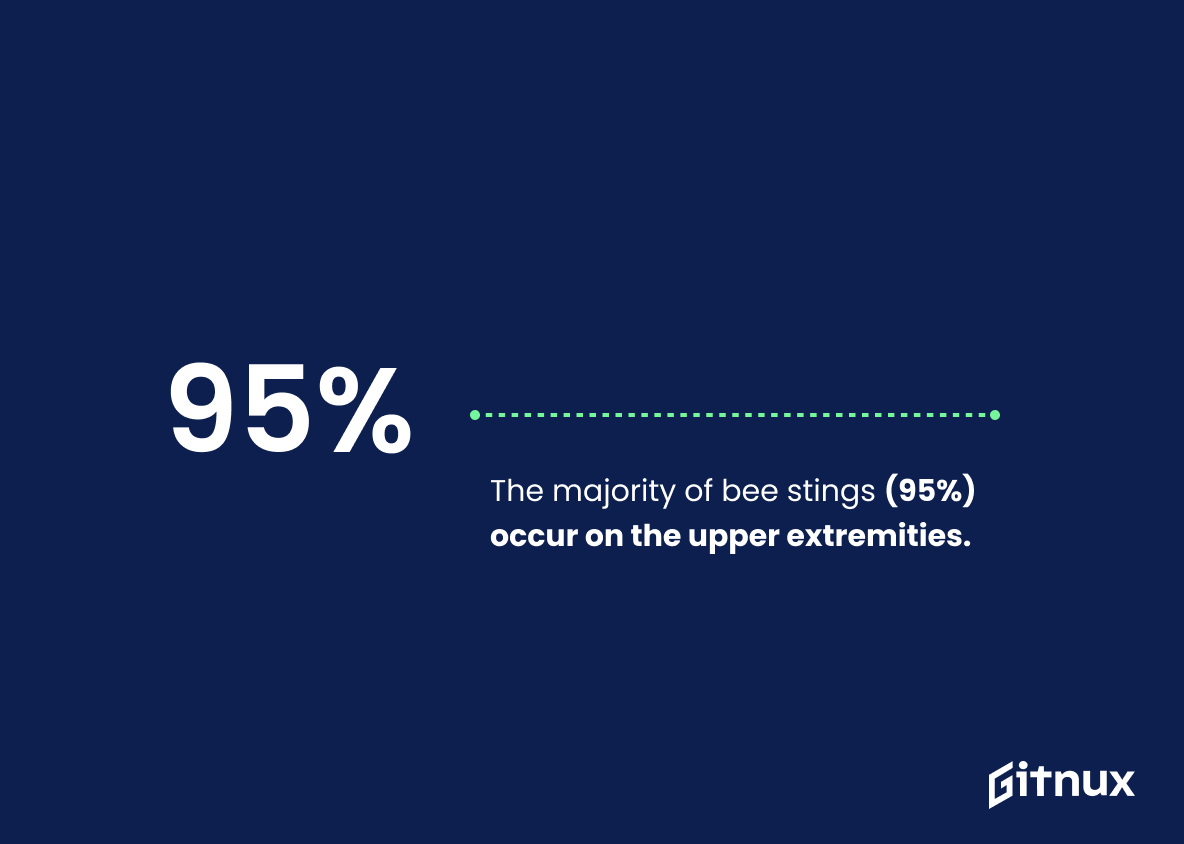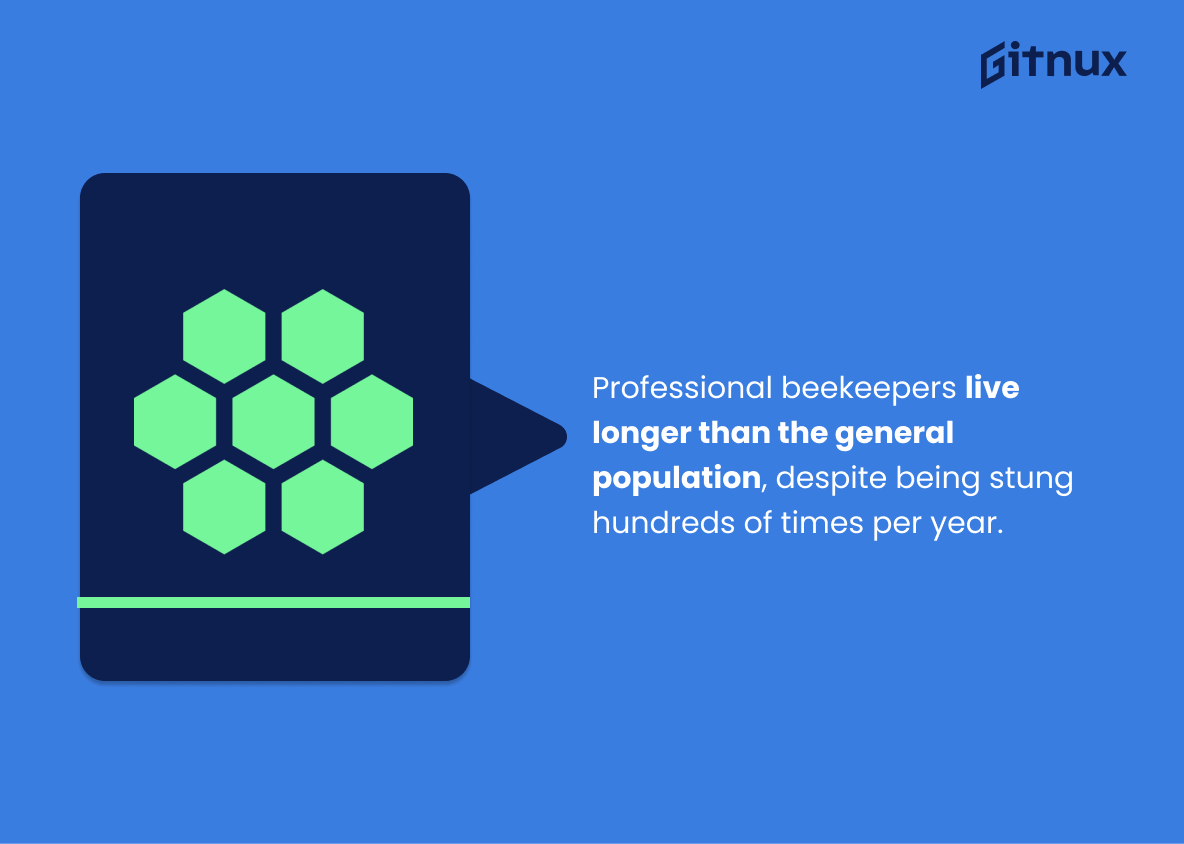Bee stings are a common occurrence in the United States, with over 500,000 people being stung each year. Approximately 3% of adults and 0.8% of children suffer from bee sting allergies, which can lead to anaphylactic shock and even death in some cases. The average bee sting contains about 50 micrograms of venom and is usually caused by Apis mellifera (the European honey bee), responsible for 97.7% of all reported incidents. Reactions to these stings vary greatly depending on the individual’s sensitivity level; 57% are rated as Grade I (mild local reaction) while only 0.3% result in Grade IV reactions (anaphylaxis). Beekeepers have been found to develop desensitization after repeated exposure resulting in decreased severity when they get stung – up to 8%.
In recent years there has been an increase worldwide in honeybee colonies – 10 times more than what was recorded 50 years ago. Despite this rise however, the risk of dying from a single bee sting remains low at 1:59507 per year according to statistics gathered between 2001-2010 where 58 percent were children or adolescents aged 19 or younger . Unfortunately 33-75 %of bees die during their first attack due largely because male victims outnumber female ones 2:1 making them easier targets for aggressive species like Africanized Honey Bees that account for most fatalities annually estimated at around 100 deaths yearly within US borders alone .
The financial burden associated with treating such injuries amounts up $5 billion dollars every year not including lost income suffered by those affected , but it’s worth noting that professional apiarists who sustain 300+ annual attacks live almost ten years longer than other members general population thanks mainly due their increased immunity levels developed overtime through regular contact with bees . Finally its important remember that although 700 types insects capable inflicting pain humans , only fifty actually cause clinical reactions so always best take necessary precautions avoid any unnecessary risks .
This statistic is a stark reminder of the potential danger posed by bees in the United States. It highlights the need for people to be aware of the risks associated with bee stings and to take the necessary precautions to protect themselves. It also serves as a reminder of the importance of protecting bee populations, as their presence is essential for the health of our environment.
Approximately 3% of adults and 0.8% of children suffer from bee sting allergies.
This statistic is a stark reminder of the potential danger posed by bee stings. It highlights the fact that a significant portion of the population is at risk of suffering from a severe allergic reaction, and underscores the importance of taking the necessary precautions to protect oneself from bee stings.
Bee Sting Statistics Overview
Bee stings are responsible for about 50-100 deaths in the United States annually due to anaphylactic shock.
This statistic is a stark reminder of the potential danger of bee stings. It serves as a warning to those who may be unaware of the risks associated with bee stings, and the importance of seeking medical attention immediately if one is stung. It also highlights the need for further research into the prevention and treatment of anaphylactic shock caused by bee stings.
The average bee sting contains about 50 micrograms of venom.
This statistic is an important piece of information when it comes to understanding the potency of bee stings. Knowing the average amount of venom contained in a bee sting can help people better prepare for and respond to a bee sting, as well as provide insight into the potential health risks associated with bee stings.
Reactions to bee stings can be classified into four grades, with 57% of cases rated as Grade I (mild local reaction) and 0.3% as Grade IV (anaphylactic reactions).
This statistic is a crucial piece of information when it comes to understanding the severity of bee stings. It reveals that the majority of reactions are mild, with only a small fraction of cases resulting in anaphylactic reactions. This is important to note, as it can help inform readers of the blog post about the potential risks associated with bee stings.
Beekeepers have a 5-8% decrease in their sting reaction severity after repeated exposure due to desensitization.
This statistic is a testament to the power of desensitization when it comes to bee stings. It shows that even with repeated exposure, beekeepers can reduce their sting reaction severity by up to 8%. This is an important reminder that even when it comes to something as potentially dangerous as bee stings, there are ways to reduce the risk and make the experience more manageable.
As of 2019, there are 10 times more honey bee colonies worldwide than there were 50 years ago.
This statistic is a testament to the resilience of honey bee colonies, having grown tenfold in the last half-century despite the numerous threats they face. It is a reminder that, with the right care and attention, honey bees can thrive and continue to be a vital part of our ecosystem. This is especially pertinent in the context of a blog post about bee sting statistics, as it highlights the importance of protecting honey bee colonies and the need to be aware of the risks associated with bee stings.
There is a 2-to-1 male-to-female ratio in bee stings received.
This statistic is significant in the context of bee sting statistics because it highlights the disproportionate risk that men face when it comes to bee stings. It suggests that men are more likely to be stung by bees than women, and thus should take extra precautions when outdoors.
Approximately 700 types of wasps and bees can sting humans, but only 50 species cause clinical reactions.
This statistic is a crucial reminder that, while the majority of wasps and bees can sting humans, only a small fraction of them can cause serious reactions. This highlights the importance of being aware of the species of wasps and bees in one’s environment, as well as the need to take precautions when dealing with them.
The odds of being stung by a bee are 1 in 7,500 per year in the United States.
This statistic is a powerful reminder of the importance of bee safety. It highlights the fact that, while bee stings are relatively rare, they are still a real risk that should not be taken lightly. By understanding the odds of being stung, people can take the necessary precautions to protect themselves and their loved ones from the potential dangers of bee stings.
Children and adolescents (0-19 years) made up 58% of bee sting injuries between 2001-2010.
This statistic is a stark reminder of the potential danger that bees pose to young people. It highlights the need for parents and guardians to be aware of the risks of bee stings and to take appropriate precautions to protect their children. It also serves as a reminder that bee stings can be a serious health hazard, and that children and adolescents should be monitored closely when they are in areas where bees may be present.
The peak age for bee stings is 8.2 years, with 82% of stings occurring between the ages of 5 and 14 years.
This statistic is a crucial piece of information when it comes to understanding the prevalence of bee stings. It reveals that the majority of stings occur in a relatively small age range, indicating that children and young adults are particularly vulnerable to bee stings. This is an important factor to consider when discussing bee sting prevention and safety.
In 2018, there were a total of 53 confirmed cases of anaphylaxis caused by bee stings in the Netherlands.
This statistic is a stark reminder of the potential danger posed by bee stings. It serves as a warning to those living in the Netherlands to take the necessary precautions when dealing with bees, as even a single sting can have serious consequences. It also highlights the importance of being aware of the signs and symptoms of anaphylaxis, and knowing how to respond in the event of an allergic reaction.
Between 2000 and 2017, there were 1,109 reported cases of anaphylaxis caused by insect stings in the United Kingdom, with bees accounting for 34% of these cases.
This statistic is a powerful reminder of the prevalence of anaphylaxis caused by insect stings in the United Kingdom, with bees being the most common culprit. It highlights the importance of understanding the risks associated with bee stings and taking the necessary precautions to protect oneself. This statistic is a valuable insight into the potential dangers of bee stings and serves as a reminder of the need to be aware of the risks and take the necessary steps to protect oneself.
The majority of bee stings (95%) occur on the upper extremities (arms, hands, and fingers) and the lower extremities (legs, feet, and toes).
This statistic is significant in the context of a blog post about Bee Sting Statistics because it provides insight into the areas of the body that are most vulnerable to bee stings. Knowing this information can help people take the necessary precautions to protect themselves from bee stings, such as wearing protective clothing or avoiding areas where bees are known to be present.
Professional beekeepers, who sustain 300 and more stings a year, have a life expectancy that is almost 10 years above the general population.
This statistic is a testament to the resilience of professional beekeepers, who despite sustaining hundreds of stings a year, are able to live almost a decade longer than the average person. It speaks to the power of the human body to withstand and adapt to the effects of bee stings, and serves as a reminder of the importance of beekeeping in our society.
Conclusion
Bee stings are a common occurrence in the United States, with over 500,000 people being stung each year. While most bee sting reactions are mild and localized to the area of contact, some individuals may suffer from anaphylactic shock which can be fatal if not treated immediately. Beekeepers have been found to develop desensitization after repeated exposure and have a longer life expectancy than those who do not work with bees. It is important for everyone to understand the risks associated with bee stings so that they can take appropriate precautions when necessary.
References
0. – https://www.allergyuk.org
1. – https://www.jacionline.org
2. – https://www.ncbi.nlm.nih.gov
3. – https://www.annallergy.org
4. – https://www.hindawi.com
5. – https://www.ourworldindata.org
6. – https://www.pubmed.ncbi.nlm.nih.gov
7. – https://www.springer.com
8. – https://www.aafp.org
9. – https://www.link.springer.com
10. – https://www.volksgezondheidenzorg.info
11. – https://www.jaci-inpractice.org
12. – https://www.agr.wa.gov
